|
ERETZ Magazine
|
Stayput
Jerusalem
Jerusalem’s history and its countless historic and religious sites
will always overwhelm the fact that it also is a living and thriving
city and population. But then, it is hard to compete with seven
thousand years of settlement.
Since the coming of the new
millennium, something has been happening in Jerusalem. The city is
undergoing a revolution. The results of the major overhaul of its
infrastructure are beginning to emerge from the scaffolding, new
economic centers are surfacing, and a new wellspring of culture is
emerging from the studios, theaters, and workshops of the city.
For the visitor to Jerusalem, its
history and historic and religious sites will always overwhelm the
fact that there is a living and thriving city and population. It is
hard to compete with seven thousand years of settlement. Ancient
people whose name is unknown were the original founders of the city,
settling sometime in the fourth millennia BCE around the large
spring that emanated from the bottom of an easy-to-defend hilltop.
By the time David arrived in the city, the spring was already hidden
inside the hill and the city was surrounded with secure walls.
Solomon and later the kings of Judah expanded the city to the north.
After its destruction by the Babylonians, it was resettled and grew
again – further north and to the west. Herod built the magnificent
Temple, which stood complete for less than a generation before it
was destroyed in the great Jewish Rebellion against Rome. But the
Temple,
originally built by Solomon, ignited many
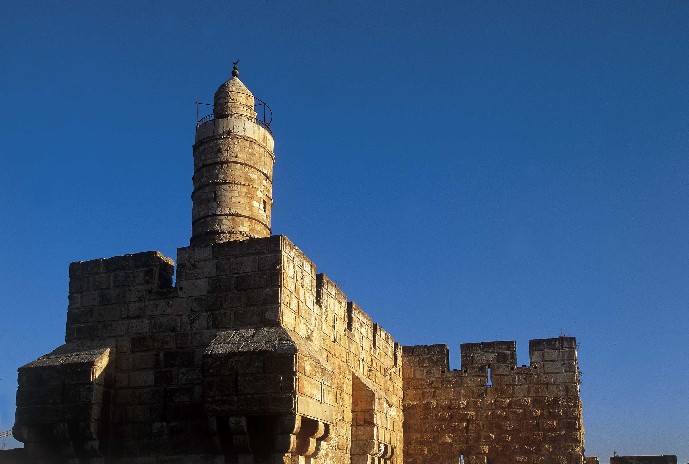 people’s imaginations; it
lived on in their dreams. The Romans built their own Temple over its
ruins, the Byzantines turned it into a church, and the Moslems
turned it into the third holiest mosque in Islam. people’s imaginations; it
lived on in their dreams. The Romans built their own Temple over its
ruins, the Byzantines turned it into a church, and the Moslems
turned it into the third holiest mosque in Islam.
The Crusaders made
it a church again; the Mamelukes turned it back into a mosque. It
was the site of redemption, the city where the messiah of all faiths
was to show up.
All this overwhelms the visitor to
Jerusalem. Some even lose their sanity and are afflicted with what
is called “Jerusalem Syndrome.” Making sense of all these layers of
civilization, trying to understand what you are seeing while
souvenir vendors hover around you and modern life flows in its
normal pattern of traffic jams and cavalcades of visiting
dignitaries, is not easy. It has to be left to the senses, it has to
sink in, to built up in that place that has been known for
generations as heavenly Jerusalem.
Next year in Jerusalem is a
blessing that is recited every year at the end of the Passover
Seder. Next years go by, again and again, and the time has come to
resolve to make it this year in Jerusalem.
(Back to top)
Shopping
The Ben-Yehuda pedestrian mall may
be the world’s biggest Jewish gift shop. It is lined with shops selling
everything tourists to Israel could imagine buying as a gift for
family and friends back home. Tourists who want to shop where the
Israelis shop can head to the charming alleys below the main stretch
to find the Ganz gift shop (8 Yosef Rivlin Street, Tel. (02)
625-1159) which has a wide selection of Judaica and cute gifts at
affordable prices. About a 20-minute walk away from
Ben-Yehuda is Emek Refaim Street, which has become main street for
Jerusalem’s English-speaking population in recent years. In addition
to numerous restaurants and cafes, Emek Refaim has some interesting
stores. For jewelry, Judaica, and other unique items made by Israeli
artists, check out Dalia’s shop (17 Emek Refaim Street, Tel. (02) 566-9498), where
a large selection is artfully arranged in a surprisingly small
space. (Dalia’s sister operates a similar store in Philadelphia.) At
the other end of the street, the Olam Qatan bookstore (52 Emek
Refaim Street, Tel. (02) 563-7507) has an interesting collection of both English and
Hebrew books that focuses on religion and spirituality.
(Back to top)
Dining in Jerusalem
Jerusalem always has been full of
holiness, history, and mystery. In recent years, however, an
innovative culinary spirit has swept over the city, allowing
visitors to experience the city in a new and refreshing way. Some of
the more tasty delicacies on offer include lamb on a bed of herbed
couscous at Cavalier (1 Ben Sira Street, Tel. (02) 624-2945, not
kosher), a veteran and excellent French restaurant, and the duck
breast with potatoes and caramelized endives served at the gourmet
restaurant 1868 (10 King David Street, Tel. (02) 622-2312, kosher).
A culinary tour of the city is not complete without a visit to
Arcadia (10 Agrippa Street, Tel. (02) 624-9138, not kosher), a
magnificent restaurant that offers classic Israeli dishes alongside
original creations such as a seafood sambusak.
(Back to top)
Dress Properly – No Crocs
Jerusalem is full of sites that
are holy to Judaism, Christianity, and Islam. Entrance to many
religious sites is restricted to the modestly dressed. (For women
that means skirts that are knee-length or longer and shirts with
high necklines and elbow-length sleeves, for men that means long
pants.) At other sites, the immodestly dressed are allowed in but
may be subject to nasty looks or even harassment. In the
ultra-Orthodox neighborhoods, large billboards on the main streets
request that visitors dress modestly. The Knesset too has gotten
into the “modestly dressed” act, though its dress code is more about
preserving a formal atmosphere than protecting religious
sensibilities. In addition to shorts and tank tops, jeans and
brightly colored Crocs are barred at the Knesset. Navy blue and
black Crocs are permitted though.
To make the most of your trip and
avoid unpleasant situations, it is recommended to clarify the dress
code before visiting sites in Jerusalem.
(back to top)
Itinerary
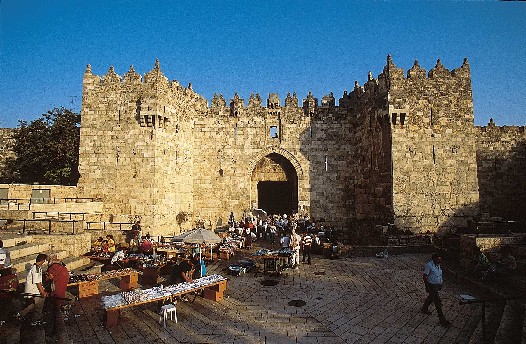
Day
1: Old City
Enter the Old City via the Jaffa
Gate and visit the Tower of David Museum, whose main exhibit focuses
on the history of Jerusalem. Then walk down David Street, the main
souvenir market, to the first intersection. Turn left onto Christian
Quarter Street and walk to the alley of Saint Helena that leads down
to the Holy Sepulcher. Tour the assemblage of churches that have
been built around the Tomb of Jesus since the third century. Exit by
the small entrance to the courtyard that leads to the Muristan
Market. Walk straight ahead until you reach the busy market street
of Khan e-Zeit. Turn right and walk down the ancient Crusader
markets. Once out of the market, make your way to Sisileh Street.
Walk down the street to the street turning to the Kotel. Walk down
to the Kotel. Take the Rabbi Yehudah Halevi steps up to the Jewish
Quarter. Make your way to the Zion Gate, walk out the gate, turn
right, and walk back to the Jaffa Gate.
(back to top)
Day 2: National Jerusalem
Start the tour with a visit to the
Israel Museum. Then walk up to the Knesset (tours on Sundays and
Thursdays, reservations required) and through the Rose Garden to the
Supreme Court Building. Opposite it is the Foreign Ministry and
behind it the Bank of Israel. The Prime Minister’s Office, Finance
Ministry, and Interior Ministry are lined up to your left. Drive to
Yad Vashem (reservations recommended) and then to Mount Herzl for a
visit to the Herzl Museum (reservations recommended). To end the
tour, drive north on the Begin Highway to the road leading up to
Mount Scopus. Drive to the eastern end of Mount Scopus for a view of
the desert. Continue to the Mount of Olives to view the Old City.
(back to top)
Day 3: Old Neighborhoods
Start at the Jaffa Street entrance
of the Mahane Yehuda Market. Walk through the market, cross Agrippa
Street, and enter the Ohel Moshe neighborhood. Walk down to Shilo
Street and turn into Beersheba Street to view the Adas Synagogue.
Cross Bezalel and walk down Even Sapir and Hirschenberg to the
Sharei Hesed neighborhood. Make your way to Kahanov Street to the
Synagogue of the Birkat Halevana – it has a huge sign outside with
the blessing of the moon. Make your way to Keren Kayemet Street.
Turn left on Keren Kaymet and right on Ussishkin Street. Turn left
on Alharizi and walk through the heart of Rehavia. Turn left on Ibn
Gabirol Street and right Keren Kaymet to reach the buildings of the
Jewish Agency – the Jewish government of pre-state Israel.
(back to top)
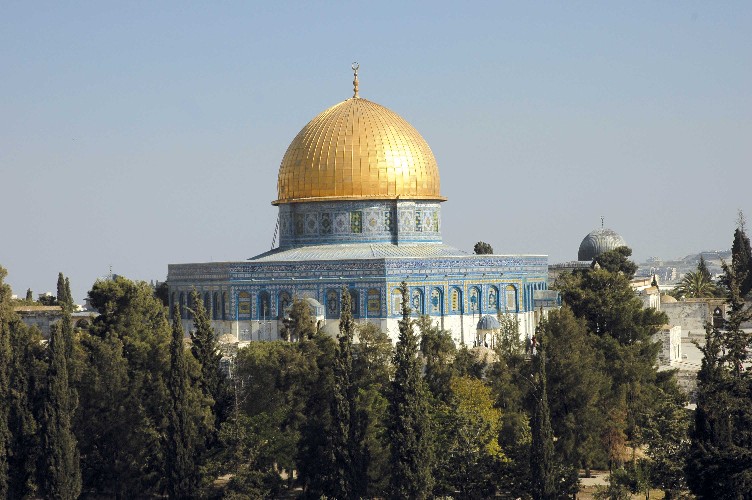
Day 4: Masada
Leave Jerusalem on the highway
leading east, toward Jericho and the Dead Sea. Stop off at Qumran to
see the Essene settlement where the Dead Sea scrolls were found.
Continue to Masada. Ascend by cable car and tour the fortress.
Descend on foot and then drive back northward to visit the Ein Gedi
National Park. From the entrance to Nahal David, continue to the
entrance to Nahal Arugot. Hike up Nahal Arugot to the Hidden
Waterfall. Descend to the waterfall and hike back along the riverbed
through the small canyon. Bring a bathing suit, walking shoes, a
hat, sunglasses, and water.
(back to top)
Day 5: Tel Aviv-Jaffa
Start by exploring Jaffa. Then
take a taste of historic Tel Aviv by strolling through Neve Tzedek,
Rothschild Boulevard, and the surrounding streets. Take a lunch
break at one of the many cafes on Sheinkin Street and then check out
the shops along Dizengoff Street. End the day with dinner on Ibn
Gabirol Street.
(back to top)
Day 6: A Day in the North
Take Route 1 to Route 6 north. Go
east on 65 to Megiddo Junction. Turn north and visit ancient
Megiddo. Continue on 66 to 77 and take 65 to 85. Go right on Route
85 and left on 90. Take Route 89 up to Safed to tour the old city.
Take Route 89 east to Route 866. Drive past Meron to 85 and drive
west to Acre to tour the Old City of Acre. Take Routes 4 and 2 to
Route 1, back to Jerusalem.
(back to top)
Dan Hotels in the Holy City
Though mayors of other cities may
not like to admit it, Jerusalem has always been the main destination
in Israel for tourists and pilgrims of all religions. Therefore, it
is only logical that the Dan Hotels, Israel’s premier hotel chain,
offers multiple options in Jerusalem for tourists and pilgrims.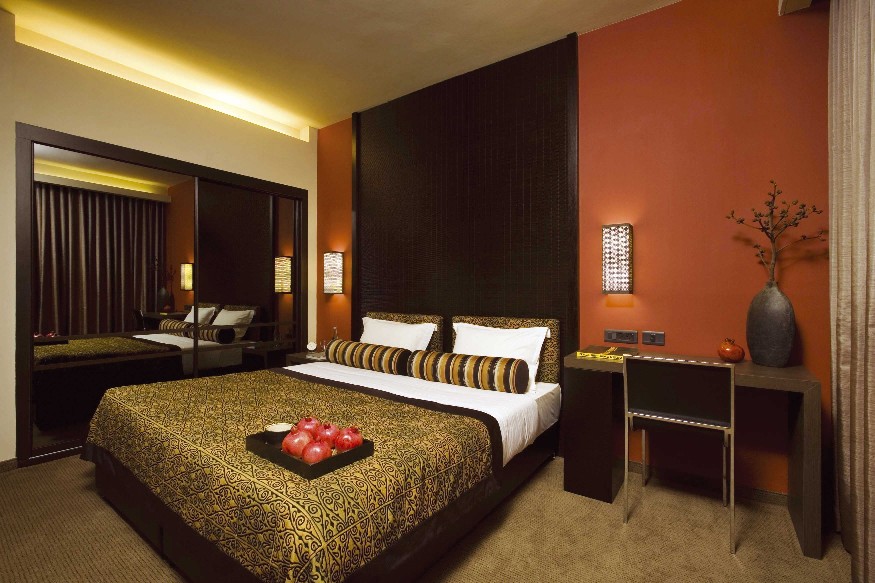
The King David Hotel, the Dan
Hotels’ flagship
hotel, caters to visiting diplomats and dignitaries in a luxurious
atmosphere with old-world charm. The Dan Panorama Jerusalem, which
recently was renovated, provides families and tour groups with a
comfortable, affordable temporary home in the heart of the city.
Finally, the Dan Gardens Jerusalem, which is slated to open this
winter, has a young, modern style that will appeal to travelers and
businesspeople on a budget. All are located within walking distance
of many of Jerusalem’s historical and modern attractions, from the
holy sites of the Old City to the pedestrian mall at the heart of
the “New City” to the Haas and Sherover promenades, which offer
panoramic views of the city.
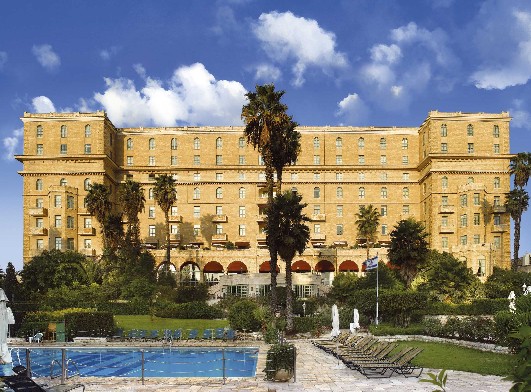
(back to top)
|
|